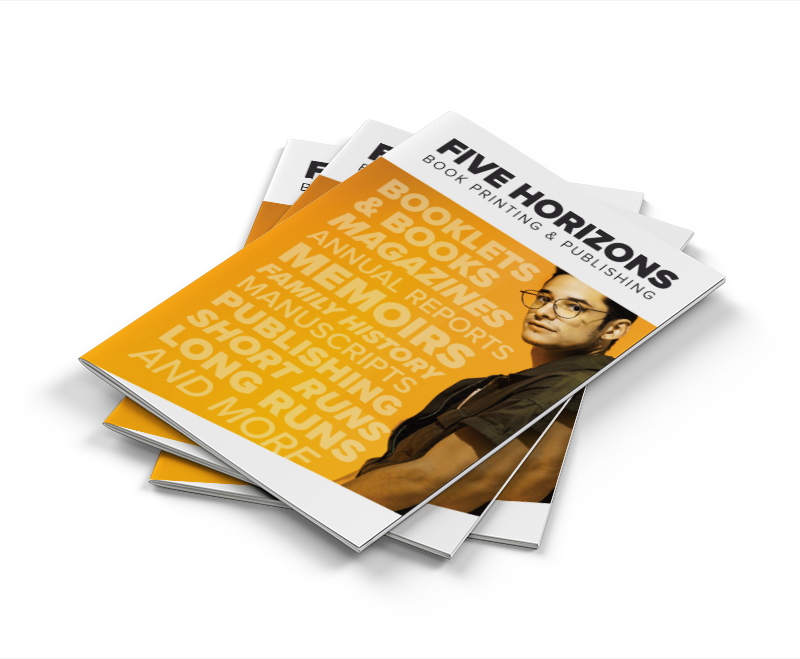






Self-publishing has become more accessible than ever, thanks to the rise of print on demand technology. Aspiring authors now have the opportunity to bring their manuscripts to life without the need for traditional publishing methods. This step-by-step guide will take you through the process of books on demand printing, from preparing your manuscript to promoting and selling your self-published book. By the end of this guide, you’ll have all the tools and knowledge to embark on your self-publishing journey.
When it comes to self-publishing, understanding the concept of print on demand (POD) is essential for aspiring authors. Print on demand is a digital printing technology that enables books to be printed in small quantities (at high print quality) or even one at a time, eliminating the need for large print runs and excess inventory. This innovative self publish approach has revolutionized the publishing industry and empowered authors to bring their stories to life without the traditional barriers.
Print on demand (POD) is a revolutionary printing process that allows authors to have their books printed as and when they are needed. With books on demand printing, authors no longer have to worry about ordering large quantities of books upfront or dealing with the challenges of storage. Instead, books are printed on demand, ensuring that each copy is produced only when a customer places an order. This not only saves time and money but also reduces the environmental impact associated with excess printing and inventory.
The evolution of print technology has played a significant role in the rise of print on demand books. In the past, authors relied on traditional publishing methods, which involved printing large quantities of books upfront. This approach often resulted in high upfront costs, inventory issues, and the risk of unsold books. With the advent of print on demand technology, authors now have the ability to print books in small quantities or even on demand, providing a cost-effective and efficient solution for self-published authors.
Print on demand books offer numerous advantages over traditional publishing methods. While traditionally published books may require authors to invest in large print runs, books on demand printing allows authors to print books as needed, reducing upfront costs and minimizing the risk of unsold inventory. Additionally, print on demand services often include distribution tools that enable authors to sell their books through major retailers and online platforms, expanding their reach and potential readership. This flexibility and accessibility make print on demand an increasingly popular choice for self-published authors.

Before you can proceed with books on demand printing, it’s essential to set up your manuscript properly. This involves formatting your manuscript according to the requirements of print on demand services and ensuring that it is ready for publication. This section will guide you through the process of preparing your manuscript, including formatting, editing, and proofreading.
A visually appealing book cover plays a vital role in attracting readers and driving sales. In this section, we’ll explore different options for designing an eye-catching book cover. Whether you’re a DIY enthusiast or prefer working with professionals, there are solutions that cater to your needs.
If you prefer a hands-on approach, there are various DIY cover design tools available to help you create a stunning book cover. Tools like Canva and Adobe InDesign offer user-friendly interfaces and a wide range of templates and design elements. You can easily customize these templates to suit your book’s genre, style, and target audience.
For authors who prefer professional assistance, collaborating with experienced book cover designers can elevate your print on demand book quality and aesthetics. Working with professional designers can result in a customized and visually compelling cover that captures the essence of your book. Professional designers have the expertise to create engaging covers that stand out on bookstore shelves or online platforms.
Cover aesthetics are crucial for creating a captivating visual impact. Consider the following elements when designing your book cover:
By carefully selecting and combining these elements, you can create a book cover that not only attracts readers but also gives them a glimpse into the world within your pages.
| Tool/Approach | Pros | Cons |
|---|---|---|
| DIY Cover Design Tools | Easy-to-use templates and design elements | Limited customization options |
| Working with Professional Designers | Customized and professional covers | Higher cost compared to DIY tools |
When it comes to self-publishing, choosing the right print on demand service is crucial for a successful journey. There are several options available, each with its own set of features and benefits. In this section, we’ll explore different print on demand services to help you make an informed decision for your book printing needs.
When evaluating print on demand services, there are a few key factors to consider:
The formatting and layout of your book play a crucial role in creating a professional and reader-friendly reading experience. In this section, we will guide you through the process of deciding on the book’s formatting and layout. We will discuss interior layout considerations, the different book formats available, and how to choose the best format for your book. Additionally, we will explore the use of templates and guidelines to simplify the formatting process.
When it comes to the interior layout of your book, there are several factors to consider, including font styles, spacing, and margins. These elements contribute to the overall readability and aesthetics of your book. Selecting the right font style is essential to ensure that the text is clear and easy to read. Consider the readability of the font at different sizes and how it complements the genre and tone of your book.
Proper spacing and margins are also important for a clean and professional appearance. Ensure that there is enough white space between paragraphs and sections to improve readability. Pay close attention to the margins, as they affect how the text is positioned on the page. Adequate margin size prevents the text from being too close to the edge of the page, ensuring that it is easily readable.
There are different book formats to choose from, including paperback and hardcover. The choice of format depends on various factors such as the genre of your book, target audience, and budget. Paperback books are generally more affordable and easier to handle, making them a popular choice for many authors. On the other hand, hardcover books or Photo Books exude a sense of prestige and durability, often preferred for special editions or coffee table books.
Consider your target audience’s preferences and the nature of your book when deciding on the format. Think about the content, genre, and overall style of your book and choose the format that best complements and enhances these elements. Remember that the format should align with your book’s goals and messaging.
Formatting a book from scratch can be a daunting task, especially if you’re not familiar with design and layout principles. Fortunately, there are templates and guidelines available that can simplify the process for you. These resources provide pre-designed layouts and formatting options that you can customize to suit your book’s needs.
Templates and guidelines help maintain consistency throughout your book, ensuring that fonts, spacing, and margins are uniform. They also save you time and effort by providing a starting point for your book’s design. Many self-publishing platforms and professional design software offer a wide range of templates to choose from.
When using templates and guidelines, make sure to personalize them to reflect your book’s unique style and content. Customize fonts, colors, and layouts to create a cohesive and visually appealing design that represents your book’s identity.
By considering interior layout considerations, choosing the best format for your book, and utilizing templates and guidelines, you can ensure a well-formatted and visually appealing final product. The next step is to explore the distribution and selling channels for your self-published book, which will be covered in the next section.
| Pros | Cons |
|---|---|
| Paperback | Hardcover |
| – Affordable | – Higher production costs |
| – Lighter and easier to handle | – Heavier and more expensive |
| – Flexibility in cover design | – Limited customization options |
| – Wide distribution options | – More commonly used for special editions |

Once your print book is ready for publication, it’s essential to navigate the distribution and selling channels effectively. This section will explore different distribution options, including online platforms like Amazon and Barnes & Noble, as well as brick-and-mortar bookstores. We’ll discuss the benefits and considerations of each distribution channel and provide tips on how to maximize your book’s visibility and sales.
When it comes to book distribution, online platforms offer a wide reach and accessibility for self-published authors. Websites like Amazon and Barnes & Noble provide a global distribution network, making it easier for readers to discover and purchase your book. These platforms also offer various tools and resources to help you market and promote your book.
In addition to online platforms, brick-and-mortar bookstores can also play a significant role in book distribution. Getting your book on the shelves of major retailers and independent bookshops can boost your visibility among readers who prefer physical copies. Consider reaching out to local bookstores or partnering with distributors who specialize in getting self-published books into stores.
When choosing your distribution channels, it’s important to consider factors such as pricing, royalties, and marketing support. Some platforms may offer higher royalties, while others provide additional marketing opportunities. It’s also essential to understand the terms and conditions of each platform, including any exclusivity agreements that may limit your distribution options.
Maximizing your book’s visibility and sales on these platforms requires strategic marketing and promotion. Utilize tools like social media and online advertising to reach your target audience. Engage with readers through author events, book signings, and online communities to build a loyal fan base. Collaborate with book bloggers and influencers to generate reviews and word-of-mouth recommendations.
By effectively navigating the distribution and selling channels, you can increase the visibility and sales of your self-published book. With a strong distribution network and marketing strategy in place, you’ll be well-equipped to achieve success as a self-published author.
Setting the right price for your book is crucial for attracting readers and maximizing profit. When determining the price of your book, there are several factors to consider. Let’s explore these factors in detail.
One of the key components to consider when setting the price of your book is the print cost. At Five Horizons Book Printing, we offer competitive pricing for our printing services, ensuring that you can find an affordable solution without compromising on quality.
Additionally, it’s important to understand the royalties you’ll receive from each sale. Royalties are the percentage of the book’s retail price that you, as the author, will earn. Our transparent royalty system ensures that you receive fair compensation for your hard work.
Implementing the right pricing strategies is essential for maximizing your book’s profit potential. One common strategy is tiered pricing, where you offer different pricing options based on formats or editions of your book. For example, you can offer a slightly lower price for digital copies and a higher price for printed editions.
Another effective strategy is to price your book slightly lower than the competition. This can help you attract readers who are looking for affordable options. However, be cautious not to undervalue your work, as this can have a negative impact on perceived quality.
Understanding competitive pricing in different markets is crucial for positioning your book for success. Research the pricing of similar books in your genre to determine the average price range. Adjust your pricing strategy accordingly to ensure that your book is competitively priced.
However, it’s important to note that price should not be the sole factor in determining the success of your book. The quality of your content, effective marketing, and positive reader reviews also play significant roles in driving sales.
By carefully considering printing costs, implementing effective pricing strategies, and understanding the competitive landscape in different markets, you can set the right price point for your book and increase its chances of success.

Promoting your self-published book is essential for reaching your target audience and generating book sales. In this section, we will explore various book promotion strategies to help you increase the visibility of your book and attract potential readers.
Remember to create an effective marketing plan that incorporates a mix of these strategies. Develop a consistent brand image across all promotional materials and always maintain a professional and approachable demeanor when interacting with readers. By implementing these marketing strategies, you can amplify the visibility of your self-published book and increase your chances of commercial success.
Launching your self-published book successfully requires careful planning and execution. To create an effective launch plan:
Social media marketing is a powerful tool to promote your self-published book and engage with potential readers. Here are some strategies for leveraging social media:
In addition to social media, explore other platforms to expand your book’s reach:
Engaging with readers and building a loyal fan base is essential for long-term success as a self-published author. Here’s how to cultivate a strong connection with your readers:
Building a fan base takes time and effort, but by consistently engaging with your readers and providing value, you can cultivate a dedicated following that will support and advocate for your work.

In conclusion, Five Horizons Book Printing provides aspiring authors with a viable and accessible path to self-publishing their books. No matter if it’s paperback printing services or Hardcover Photo Books, we have the delf publish infastructure to have you covered. By following the step-by-step guide outlined in this article, you’ll have the necessary knowledge and tools to navigate the self-publishing journey successfully.
With books on demand printing, you can bring your manuscript to life without the need for traditional publishing methods. Embrace the possibilities of self-publishing and embark on your path to becoming a published author with Five Horizons Book Printing.
Whether you’re an aspiring author or have already self-published a book, it’s important to remember that self-publishing is a journey. It requires dedication, perseverance, and a willingness to learn and adapt. But with the help of Five Horizons Book Printing, you can confidently take the next step in your self-publishing journey and share your story with the world.
Print on demand (POD) is a digital printing technology that allows books to be printed in small quantities or even one at a time, eliminating the need for large print runs and excess inventory.
To prepare your manuscript for books on demand printing, you need to format it according to the requirements of print on demand services and ensure it is ready for publication. This involves formatting, editing, and proofreading.
You can choose to use DIY cover design tools like Canva or Adobe InDesign, which offer easy-to-use templates and design elements. Alternatively, you can work with professional designers to create a customized and professional cover for your book.
When choosing a print on demand service, consider factors such as printing quality, distribution options, pricing, and royalties. Ensure the offer POD service, and if possible a print on demand site that offers free quotes and printed book prices.
Consider font styles, spacing, and margins for a professional and reader-friendly reading experience. Decide on the book format, such as paperback or hardcover, and utilize templates and guidelines to simplify the formatting process.
You can distribute your self-published book through online platforms like Amazon and Barnes & Noble, as well as brick-and-mortar bookstores. Each distribution channel has its benefits and considerations, so choose the ones that align with your goals.
Factors to consider when setting the price include understanding printing costs and royalties, as well as employing different pricing strategies for maximum profit. Additionally, it’s important to consider competitive pricing in different markets.
You can promote your self-published book through online marketing, social media marketing, book reviews, author websites, and more. Creating an effective marketing plan and executing promotional activities will increase the visibility and sales of your book.
Prepare for your book launch by creating an effective launch plan and leveraging social media and other platforms to generate buzz. Engaging with readers and building a fan base will contribute to the success of your book.
Copyright © 2025 Five Horizons. All Rights Reserved.